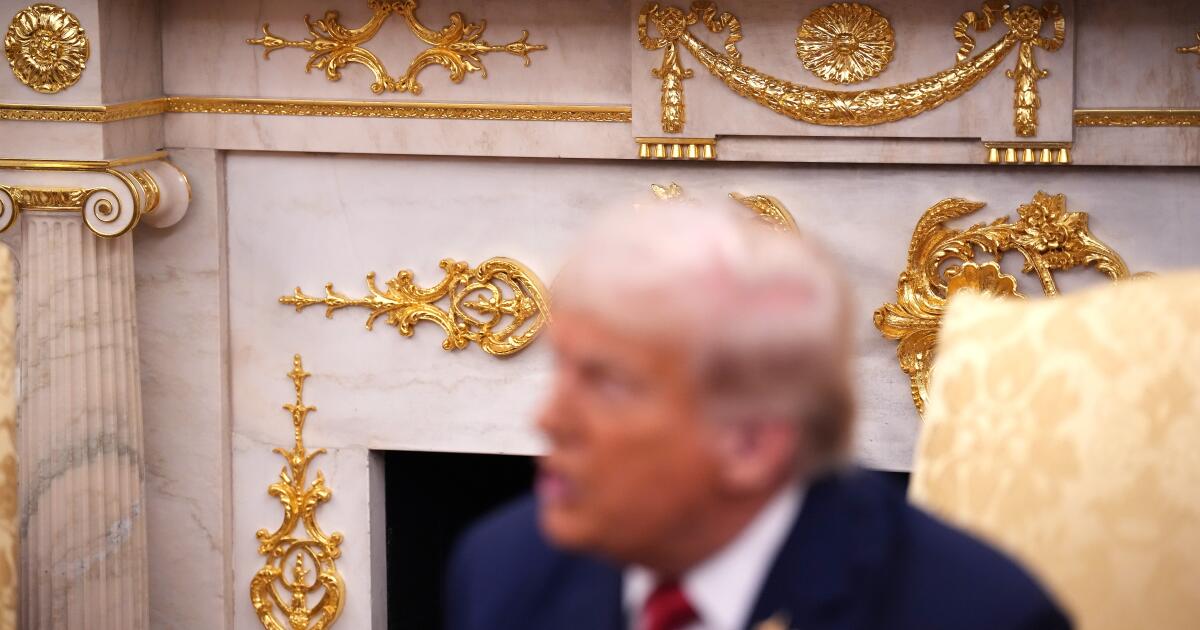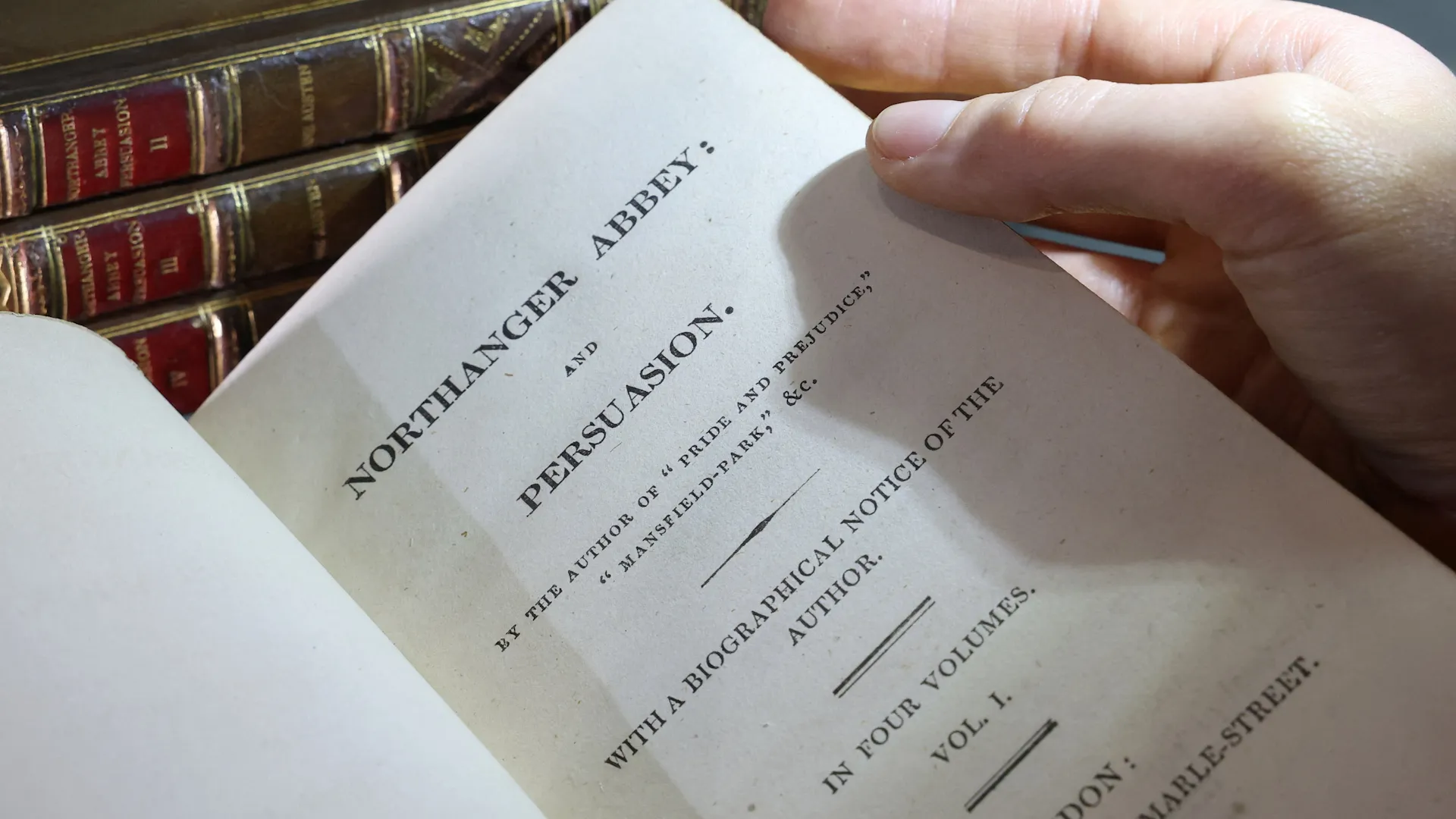WASHINGTON — President Trump last week released a national security strategy laying out his vision for America’s role in the world, tempering U.S. support for longstanding allies and recasting U.S. global interests in business terms.
China took note.
The paper’s section on Asia, almost entirely devoted to China and the threat of war over Taiwan, concludes with an imperative to win “economic and technological competition” in the Indo-Pacific.
But the document offers no strategic plan on how to bolster U.S. alliances and an infrastructural base unprepared for a war this decade. And it never once mentions the race against China for superiority in artificial intelligence.
You’re reading the L.A. Times Politics newsletter
George Skelton and Michael Wilner cover the insights, legislation, players and politics you need to know in 2024. In your inbox Monday and Thursday mornings.
By continuing, you agree to our Terms of Service and our Privacy Policy.
Three days after releasing the document, Trump announced that Nvidia, the world’s most valuable company and leading chip maker, could begin selling powerful chips to China — the kind of chips key to powering AI. Trump’s move broke with decades of U.S. export control policy he once supported.
It was a welcome series of events in Beijing, where Chinese-state media interpreted Trump’s actions as an “inward retrenchment” — pragmatic steps from a shrinking superpower, focused on U.S. trade in the region above all else. The president’s moves come as the White House has tried to lower tensions with Beijing triggered by Trump’s tariff hikes.
Trump alluded to economic concerns when he explained the decision on chips with a social media post: “We will protect National Security, create American Jobs, and keep America’s lead in AI.”
Trump’s new strategy “differs from the style of the first term, which emphasized ‘great power competition,’” one Chinese analysis read, “and shifts toward an inward and domestic focus, emphasizing ‘America First.’”
One provision of the paper suggested Trump would adopt a version of the Monroe Doctrine, asserting U.S. influence over the Western Hemisphere while allowing other regional powers — such as Russia and China — to assert dominance in their own backyards. Other portions described China’s threat to Taiwan in purely economic, not military, terms.
“The document adopts softer language and shifts its declaratory policy from ‘opposes’ to ‘does not support’ any unilateral change to the status quo in the Taiwan Strait,” said Tong Zhao, an expert on China at the Carnegie Endowment for International Peace. China views Taiwan as a breakaway province and has long spoken of reuniting with the mainland.
“China has shifted from merely opposing Taiwan independence to proactively promoting unification, and is no longer satisfied with simply maintaining the status quo,” Zhao said. The softer wording, he added, “could signal to Beijing a weaker U.S. commitment to preserving that status quo.”
It’s a strategic direction with few adherents in Washington.
For decades, U.S. presidents have maintained a policy of strategic ambiguity with China over Taiwan, suggesting that Washington would defend the island against Chinese military action without explicitly outlining its plans.
But Republican lawmakers on Capitol Hill have encouraged Trump to take the opposite tack, abandoning strategic ambiguity and recognizing Taiwanese independence. And this week, senior GOP senators spoke out against the president over his decision to allow Nvidia to sell chips into China.
Rush Doshi, a former Biden administration official now at Georgetown University’s School of Foreign Service, said it was a “big deal” that China isn’t even mentioned in the national security strategy until the 19th page.
“It’s also a significant departure from the first Trump term and the Biden administration,” Doshi said. “The aim is to stabilize relations with China rather than compete to secure American interests.”
A diplomat with the Chinese Foreign Ministry reacted cautiously to the Trump administration’s recent moves, telling reporters that both countries “stand to gain from cooperation and lose from confrontation.”
“The principle of mutual respect, peaceful coexistence, and win-win cooperation is the right way for the two countries to get along,” said Guo Jiakun, spokesperson for the Foreign Ministry, “and is the only realistic choice.”
Taiwanese officials declined to comment, but pointed to an official statement from their Foreign Ministry that said that the Trump administration “has continued to show support for Taiwan” with its national security strategy.
The statement said Taiwan was committed to working with the United States and bolstering its defense capabilities, adding, “these actions demonstrate to the international community Taiwan’s steadfast determination to protect itself and maintain the status quo.”
‘Military overmatch’
Trump’s security strategy emphasizes the need to deter a conflict over Taiwan to preserve global shipping routes in the region, stating the United States “will build a military capable of denying aggression anywhere in the First Island Chain” — a strategic ring of islands off the east coast of China, including Taiwan.
“Deterring a conflict over Taiwan, ideally by preserving military overmatch, is a priority,” the paper reads.
An internal Pentagon assessment first reported by the New York Times this week found the U.S. military had lost its strategic edge over China, and that its forces would be outgunned, or overmatched, in a direct conflict in the South China Sea. A defense official confirmed the veracity of the report to The Times.
Pledges by the Trump administration to transform the U.S. military, and particularly the Navy, in time for such a conflict may be too little, too late, with Chinese President Xi Jinping directing the Chinese army to be ready to reclaim Taiwan by 2027. And China’s rapidly expanding military capabilities on land and sea have shortened the warning time that Washington and its allies would have to come to Taiwan’s defense.
“The problem is, the lead time to prepare is getting shorter and shorter,” one Australian diplomat told The Times. “We won’t have much notice.”
Oriana Skylar Mastro, a strategic planner on China for U.S. Indo-Pacific Command and a fellow at Stanford University, said the document’s language on defending the First Island Chain is consistent with that of past administrations — but leaves out details on how it plans to carry that out.
“The United States needs to invest in the right technologies, and needs to build the right weapons, more of them — and then figure out where to place them,” Mastro said. “Part of the issue may be political, but for the most part, it’s just geography. There’s very little landmass in the combat radius of Taiwan, and those areas — southwest Japan, northwest Philippines — are already saturated [militarily]. There’s just not a lot of space to put stuff.”
The administration’s strategy also provides China with a road map to retake Taiwan in a way that Trump may be able to accept, Zhao said, allowing Chinese dominance over the island while pledging to maintain freedom of navigation throughout the region.
The administration’s approach to the area follows “mercantile logic,” Zhao said, providing Beijing with a path forward on unification that could avoid U.S. intervention — inspired by Russia’s efforts to woo Trump and his aides away from American commitments to Ukraine with promises of trade deals, financial opportunities and economic cooperation.
“If Washington was willing to tacitly accept China’s sovereignty claims over disputed features across the South China Sea,” Zhao said, “Beijing would have little incentive to threaten commercial navigation.”
What else you should be reading
The must-read: Congressional Democrats say Paramount’s bid for Warner raises ‘serious national security concerns’
The deep dive: In first year in Senate, Schiff pushes legislation, party message and challenges to Trump
The L.A. Times Special: AI slop ad backfires for McDonald’s
More to come,
Michael Wilner
—
Was this newsletter forwarded to you? Sign up here to get it in your inbox.












